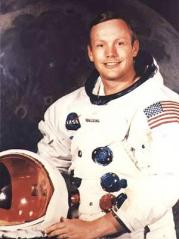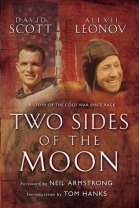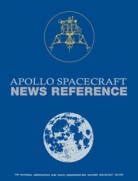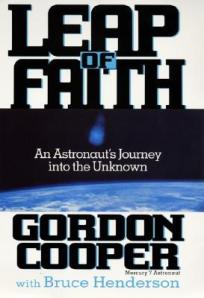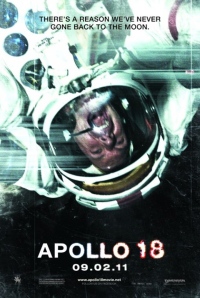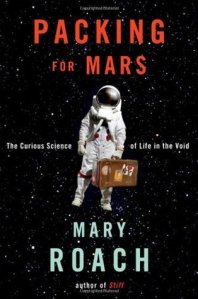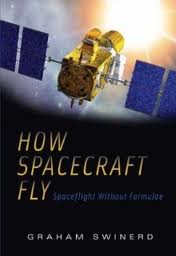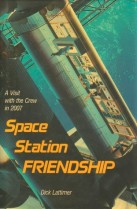 Back in 1988, a US space station on Low Earth Orbit seemed almost certain. NASA had just signed a series of ten-year contracts and the various parts would soon start to be built. This is despite the numerous redesigns and budget cuts Space Station Freedom had suffered since first being announced in Ronald Reagan’s 1984 State of the Union Address. By 1993, the project was dead… and was later reborn in 1998 as the International Space Station.
Back in 1988, a US space station on Low Earth Orbit seemed almost certain. NASA had just signed a series of ten-year contracts and the various parts would soon start to be built. This is despite the numerous redesigns and budget cuts Space Station Freedom had suffered since first being announced in Ronald Reagan’s 1984 State of the Union Address. By 1993, the project was dead… and was later reborn in 1998 as the International Space Station.
This makes Dick Lattimer’s Space Station Friendship, which describes a visit to a US space station in 2007 by three postgraduates, alternate history rather than futurism. The design of Space Station Friendship follows in all respects except name that of Space Station Freedom:
I call the station Friendship after our first orbital U.S. spaceship, John Glenn’s Frienship 7. To me the name reflects what should be the ultimate goal of all our undertakings in space. (p 18)
Much of the space technology describe in Space Station Friendship has not changed: the Soyuz is still flying, the ISS is not dissimilar to designs for Space Station Freedom; and while there is no “fleet” of Space Shuttles flying missions every 30 days, in 2007 there were three Shuttle flights. In other areas, the book gets it badly wrong. Admittedly, Lattimer could not have predicted the USSR would collapse three years after his book was published, but given the book’s focus on science and technology, Lattimer’s vision of twenty-first century computing woefully off. At one point, he describes Space Station Freedom as using a DEC VAX. DEC, of course, was acquired by Compaq in 1998 and its marque immediately retired, and VAX computers were discontinued in 2000. But it’s the lack of personal computing, and the clumsy EGA CRT monitors described by Lattimer, which particularly stand out. He also makes mention of a “Dick Tracy” radio-wristwatch, whereas we have instead mobile phones. And then there’s HOTOL, a British spaceplane. The project was cancelled in 1988, but was reincarnated in the private sector the following year as Skylon.
Some of the details of the space station are also slightly wrong. Space Station Friendship is described as painted throughout in pastel colours, but the ISS has a chiefly white interior. Lattimer mentions the space station’s peculiar smell, but the ISS reportedly has no smell because air is continuously flowing throughout it. Lattimer also makes much of the psychology of extended stays – of ninety days in the book – aboard the station, but in point of fact the postgrads’ stay of thirty days in no different to a typical shift aboard an oil rig, and no such safeguards as outlined in the book are on rigs.
All these, however, are mostly forgivable. The book’s focus is the space station, and if some of Lattimer’s predictions have since been proven wrong, it matters little given that the central premise of Space Station Friendship remains mostly spot-on. Unfortunately, the book suffers from a more serious problem: it is little more than a serious of lectures aimed at a trio of remarkably ignorant doctoral candidates. Given that the postgrads are stand-ins for the reader, their ignorance is not entirely unexpected; but they would have been more plausible had they demonstrated that their training had taught them something about the space station and its purpose.
Each chapter of Space Station Friendship covers a particular area of the facility. They follow a similar pattern. The three postgrads – Mary Two Hawks, Billy Wong and Wayne Morrison – are introduced to one of the station’s crew, who then lectures them in detail about their work. And this work is not just scientific – much of it is commercial, and some of it is for the military and so classified. There is a heavily US-only focus to the space station and its work, though for a single-nation project this is no real surprise. The problem with many of the “lectures” given by the astronauts aboard Space Station Friendship is that Lattimer has made little or no effort to make them interesting. They’re dull, and the clanking prose does little to improve them.
In fact, Space Station Friendship is quite badly written. The prose level is better-suited to a children’s book, but the dialogue – of which it is mostly comprised – contains much advanced science and engineering. There is a way to make a conversation such as the following comprehensible, or at the very least readable:
“Ready, Barn,” the lunar commander replied.
“Okay. TIG 142034700 NOUN 67 5530000370 plus 0002, need A 47 in plus 37364 plus 05607 plus 58642 plus 56955, needle 465 is plus 00370, needle 546 is NA. Ignition 1 Rev late is 1440209, toug weight 10789. Over.”
“Roger. Copy 142034700 55350000370 plus 0002 plus 37364 plus 05607 plus 58642 plus 56955 plus 00370, NA 1440209, tug weight 10789. Over.”
“That’s affirmative, Kathy. P32 CSI PAD follows. NOUN 11 143015060 NOUN 37 14438 all zips NOUN 81 0492 all zips. Need A 473 is 01818, 275 is 02780, AGS DELTA Vs plus 0492 all zips plus 0010. Over.” (p 100)
Lattimer neither explains the above, nor glosses it. (For the record, the commander of an Orbital Transfer Vehicle on the lunar surface is reading off the settings from their guidance computer prior to launching and rendezvousing with an “aero-assist skirt”.)
Space Station Friendship is illustrated throughout with black and white sketches by Michael Lattimer. They add little to the story. A final chapter, ‘Photo album: Friendship’s Early Days’, contains five pages of photographs and artists’ impressions of Space Station Freedom.
The final chapters of Space Station Friendship reveal a wider space programme. The US sends regular missions to the Moon, and is working on an international mission to Mars. An epilogue set in 2019 mentions a Mars conveyor and a settlement on the Sea of Tranquility.
There are more interesting and better-written books about space stations available, and while there’s some entertainment to be derived from Lattimer’s failed futurism, there’s no other real reason to bother reading Space Station Friendship. Disappointing.
Space Station Friendship, Dick Lattimer (1988, Stackpole Books, ISBN 0-8117-1683-X, 219 pp + glossary, further reading and index)
